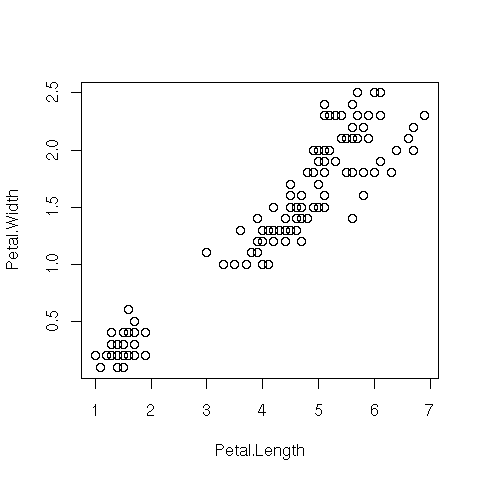
Desktop Survival Guide
by Graham Williams


|
DATA MINING
Desktop Survival Guide by Graham Williams |

|
|||
Basic Plot |
R's plot function provides the basic interface to the sophisticated graphics system. Given any object plot will endeavour to determine how to display the object. Other components of the graphic can then be built up using a variety of functions. As new components are added, they lay on top of what is already on the graphic, possibly occluding other components.
Standard types of plots include scatterplots, boxplots, barplots, histograms, and piecharts. Each can be quite simply generated through high level calls to R functions.
The simplest of plots is the
scatterplot which displays
the location of points on a two dimensional plot. Here we
attach the common iris dataset and choose
two variables to plot: Petal.Length and
Petal.Width. The attach function allows the
column names to be used without the normal iris$ prefix (by
adding the dataset to the search path). A detach removes
the object from the search pathThe
resulting scatterplot illustrates some degree of correlation between
these two variables, in that, generally speaking, for larger petal
lengths, the petal width is also larger. We can also see two clear
groups or clusters in this data: a cluster of entities with a petal
length less than 2 and width less than about 0.6, and another group
with petal length greater than about 3 and petal width greater than
about 0.9.

attach(iris) plot(Petal.Length, Petal.Width) detach() |
If the dataset is only being used by the plot function
and nowhere else then we could use with:
with(iris, plot(Petal.Length, Petal.Width)) |
Of course, we could simply use the full path to each column of data to
be plotted:
plot(iris$Petal.Length, iris$Petal.Width)) |
Copyright © Togaware Pty Ltd Support further development through the purchase of the PDF version of the book.